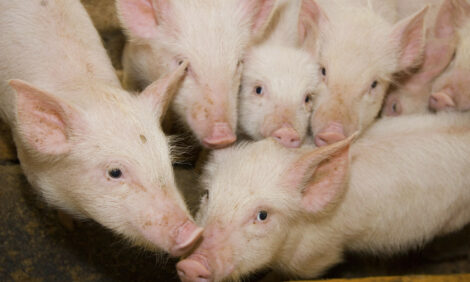



Inbreeding: not all gloom and doom
In general, the greater the degree of inbreeding, the greater the reduction in performance of the pig. However, Genesus experts say that inbreeding in pig populations is not all gloom and doom.As a process, mating of individuals that are related is defined as inbreeding. Strictly speaking, all animals in a breed or population are related since most breeds were founded by a small number of animals. However, in practice, inbreeding is thought of as mating of animals that are more closely related than the average in the breed.
The standard measure of inbreeding is referred to as the Inbreeding Coefficient. Methods of estimating the relationship between any two individuals and thus the inbreeding coefficient of an individual are well documented starting in 1920 with Wright.
The coefficient of inbreeding (F) measures the probability of identical genes at any locus in an individual. There are two components to the coefficient, one is dependent on the number of common pedigree links to an individual’s parents through a common ancestor(s) and the second is the inbreeding coefficient of the common ancestor(s). Together these form the inbreeding coefficient of the individual. For details on calculating the inbreeding coefficient, click here.
One concern with inbreeding is the reduction in performance with high levels of inbreeding. This reduction varies by trait or trait groupings. The depression of reproductive performance traits is well documented but inbreeding depression impacts other traits as well (Kock et al. 2009).
In general, the greater the degree of inbreeding, the greater the reduction in performance. However, it is important to note that this effect is observed at much higher levels of inbreeding than are commonly found in today’s mainstream pig breeds and certainly well above what is considered acceptable in modern pig genetic improvement programmes. It is also important to remember that the essentially opposite effect of inbreeding is heterosis which provides a boost in performance resulting from crossing animals from different breeds. Therefore, this effect of inbreeding is of little concern in the commercial pig industry.
Selection programmes use estimated breeding values, and this will tend to identify animals that are more related because they tend to share more genes associated with superior genetic merit. Increased genetic merit of selection candidates drives genetic improvement. Therefore, in that respect, inbreeding is not a bad thing but needs to be managed. One factor impacting genetic improvement rate is the amount of genetic variation in a population. Increased inbreeding results in decreased genetic variation and which has a negative impact on genetic gain. Mating strategies that control inbreeding while maximising the rate of genetic improvement are a staple in modern breeding programmes.
Today, the routine use of genomic data in pig breeding programmes offers more opportunities to improve the estimation and management of inbreeding. At the recent World Congress on Genetics Applied to Livestock Production, several papers focused on utilising genomic information to assist in managing inbreeding in genetic improvement programmes. Genesus controls inbreeding by utilising planned mating strategies and selection programmes that optimise the rate of genetic improvement. Current Genesus genetic improvement programmes focus on assisting our customers in maximising profitability.
Pius B. Mwansa, PhD, Genesus Inc.










